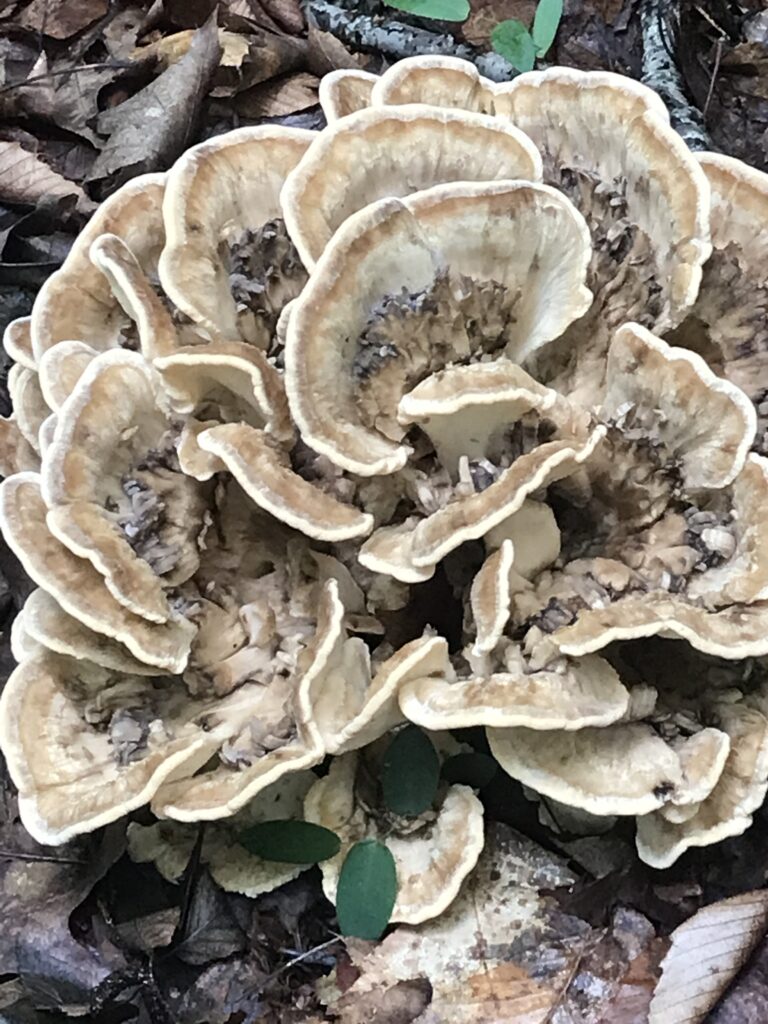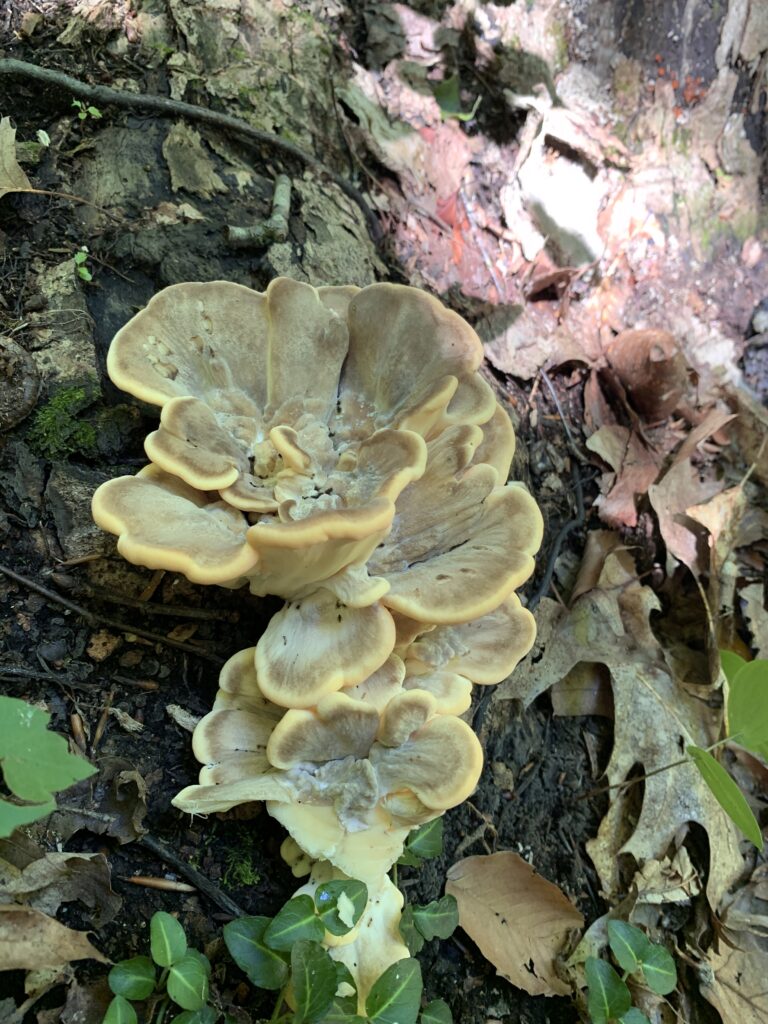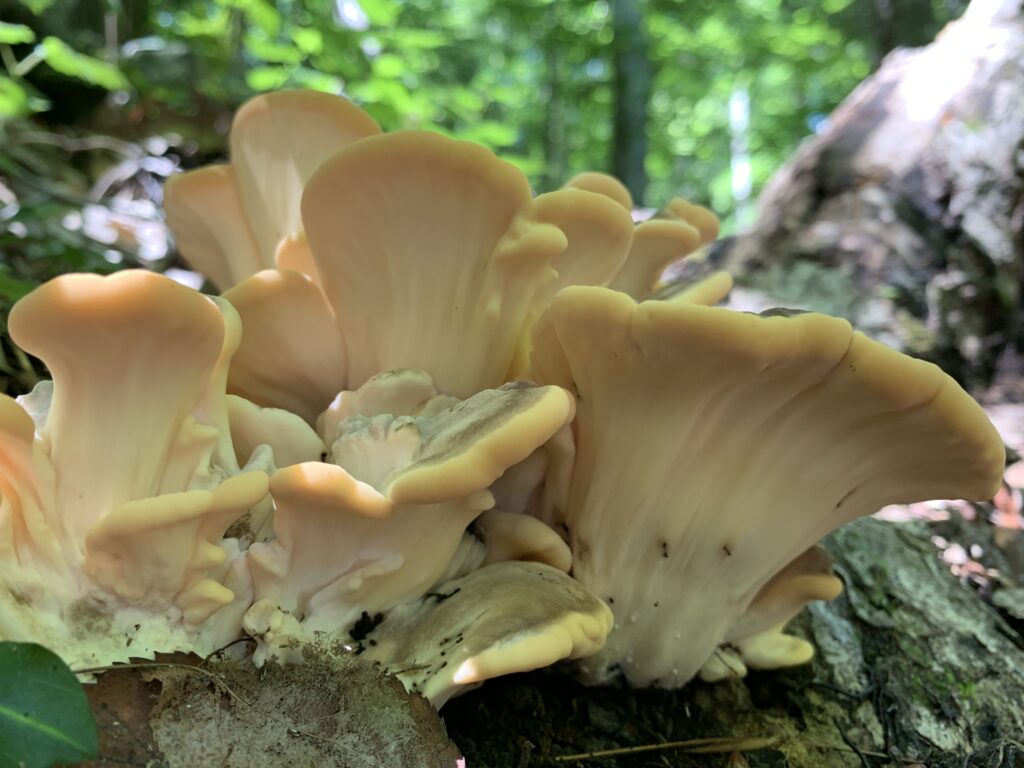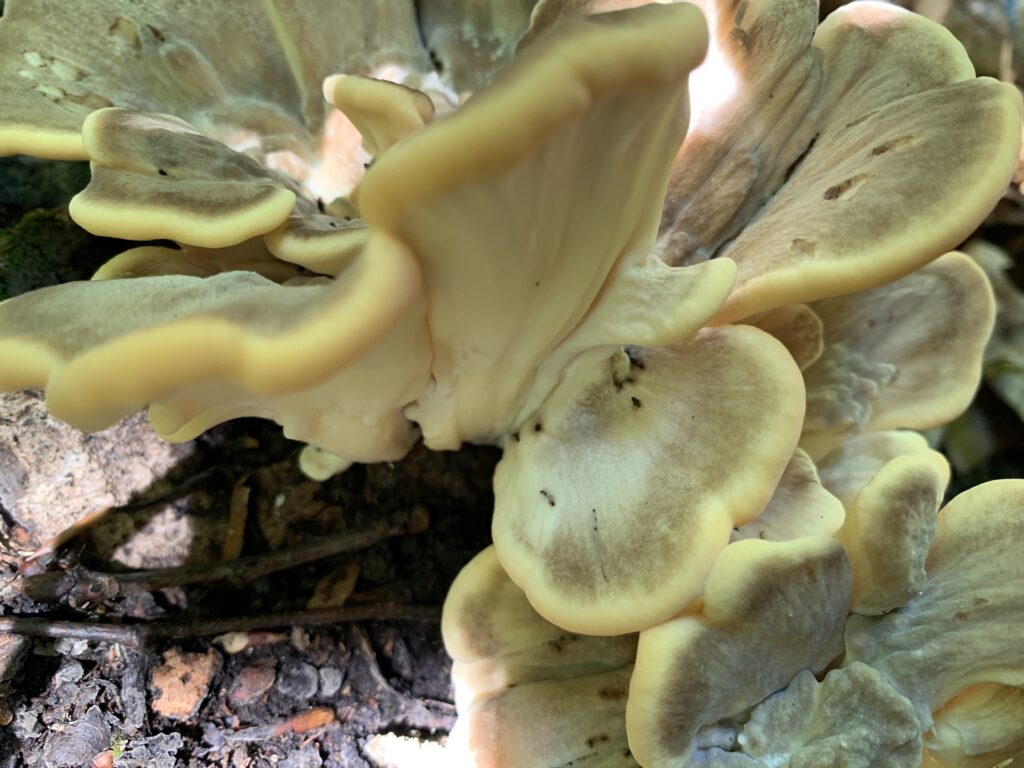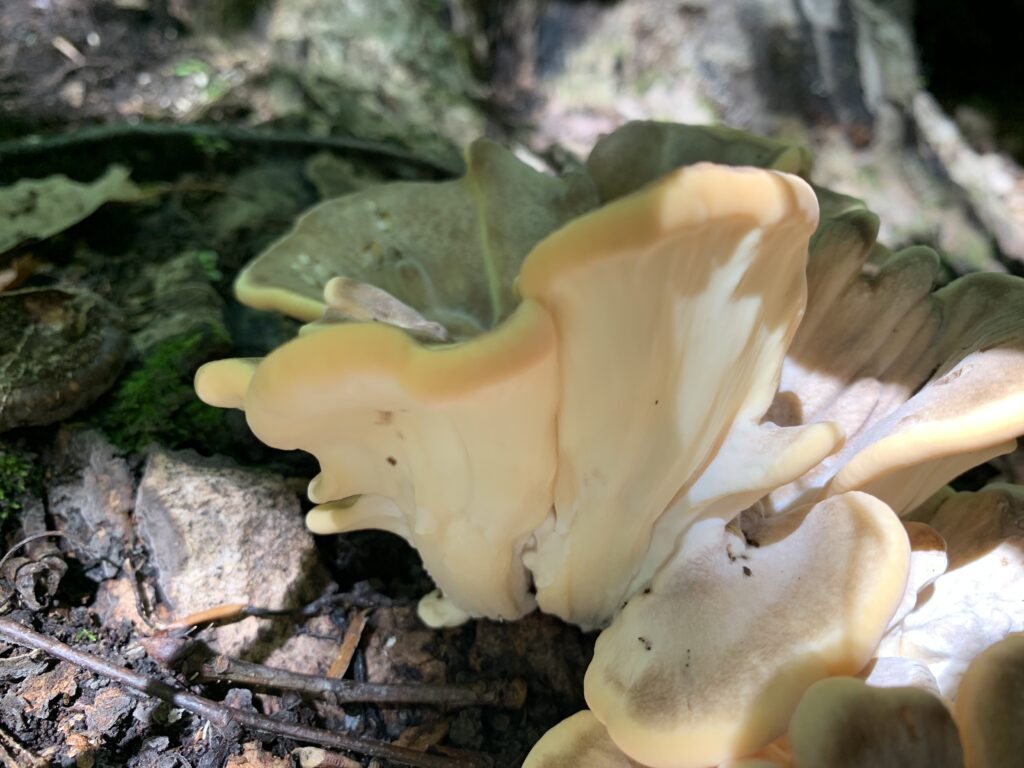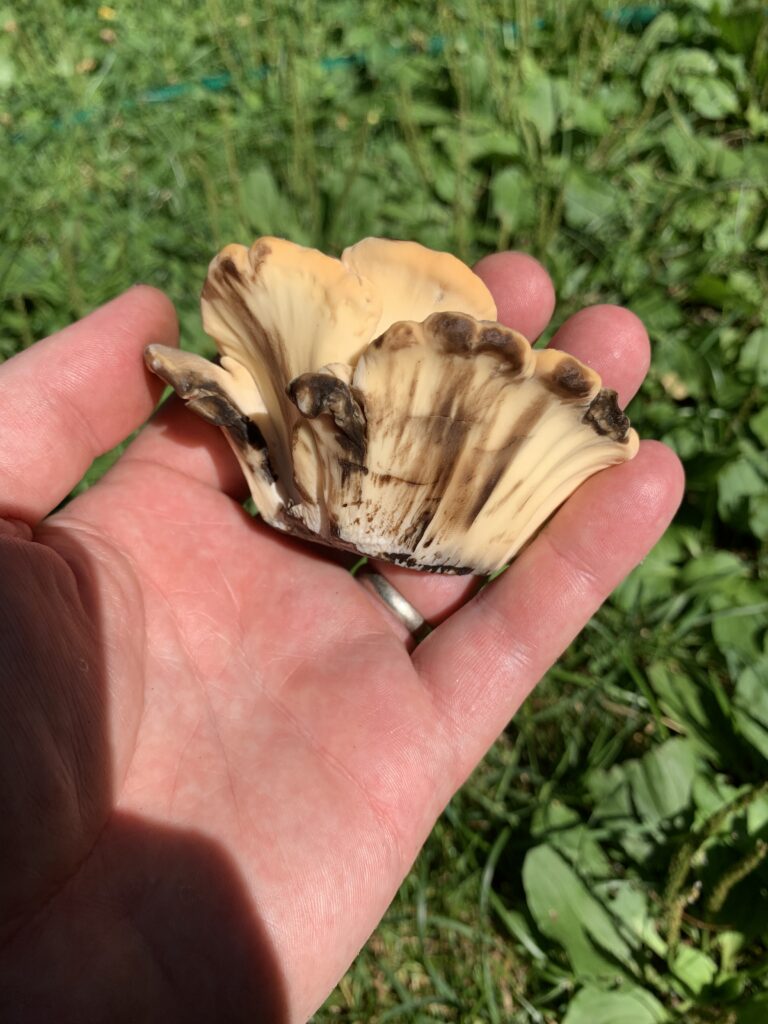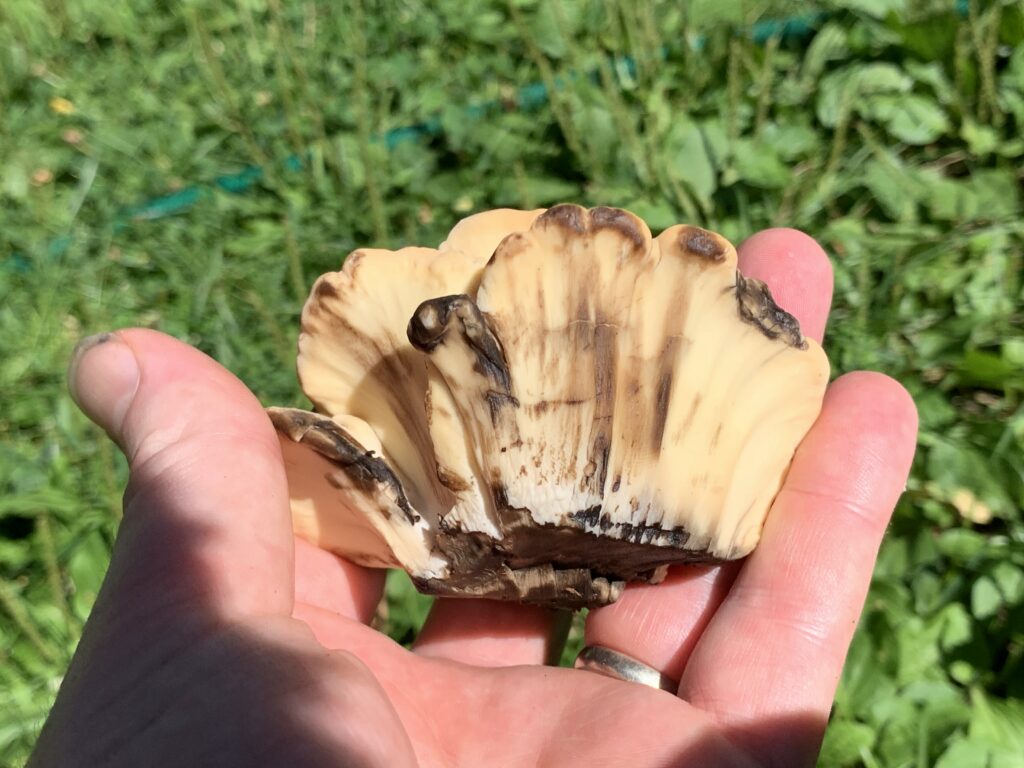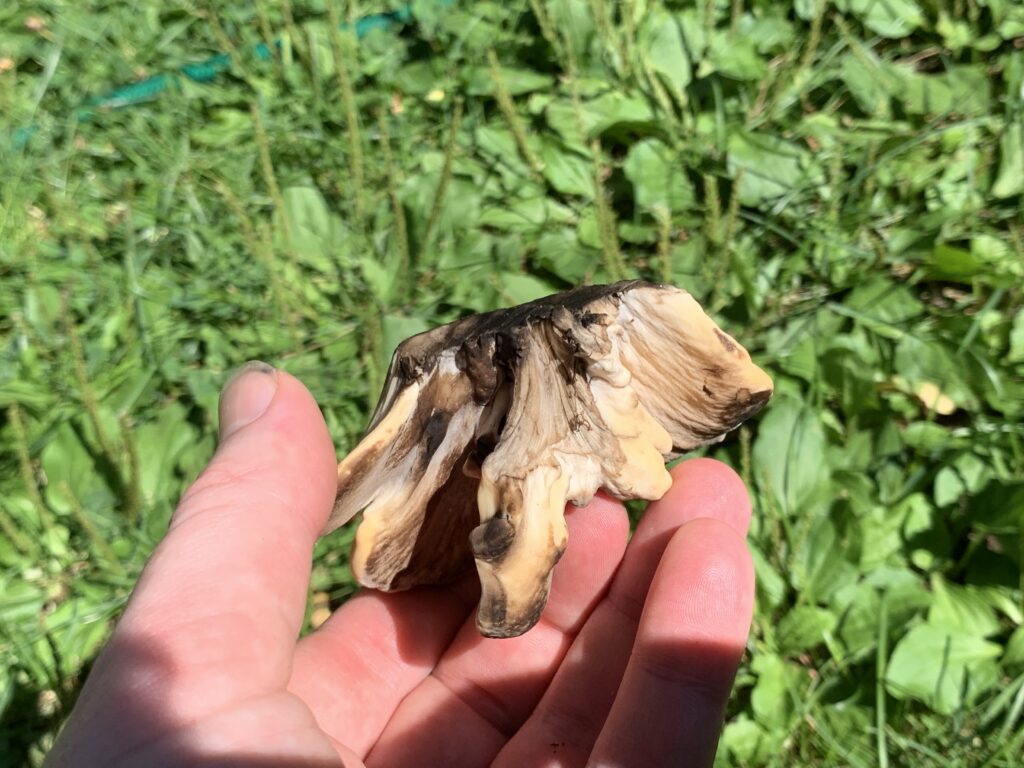| Ecology & Habitat | Parasitic, or Saprobic, Growing Singly, or sometimes with a few other fruiting bodies at the base of a tree. It grows on dead or dying hardwood trees, particularly oak and beech. |
| Edibility, Taste & Odor | Edible |
| Cap | Cap color is yellowish-brown or reddish-brown, quickly bruising dark black when handled. |
| Pores | White, quickly bruising dark black when handled. |
| Spores | White |
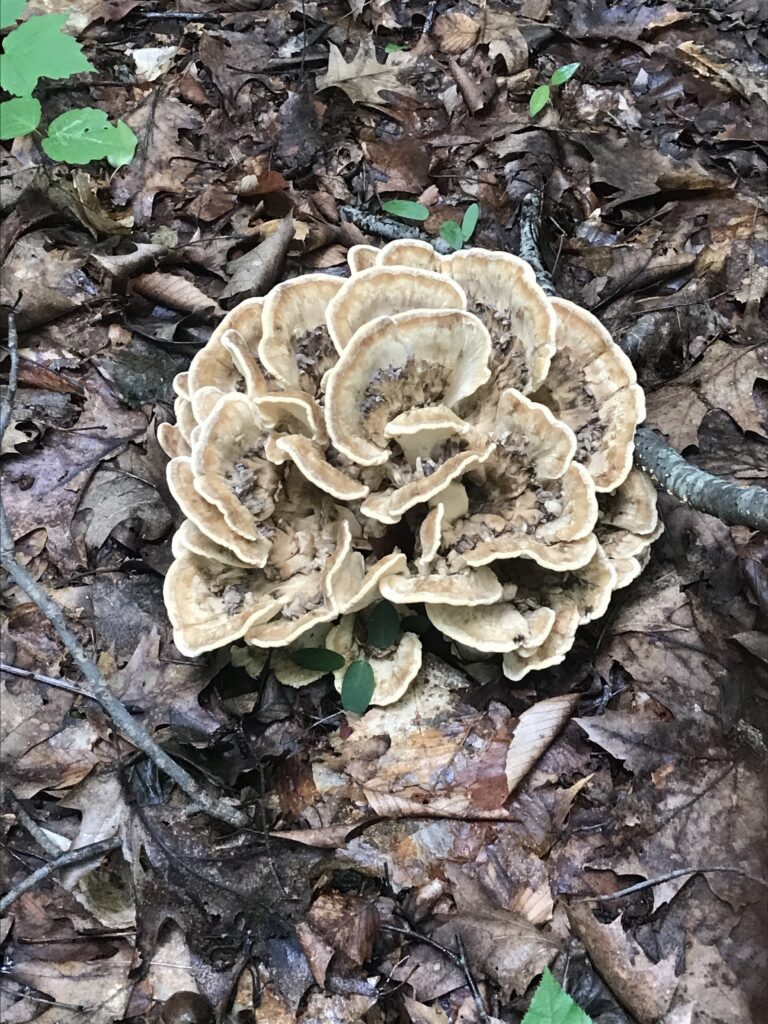
The common translates to “Sumstine’s black-staining polypore”, refers to its characteristic dark black staining when bruised or cut. This fungus is typically found growing on dead or dying hardwood trees, particularly oak. The fruiting body of Meripilus sumstinei is large and fan-shaped, with a velvety brown upper surface, a white pore surface underneath, which releases white spores. It can grow to be quite large. The ones in the photos beleow are about a foot in diameter. But, they can be ever larger than that. The flesh is tough and fibrous near the center, but is softer near the outer edges of each of the fan shaped caps. It is considered edible when young but will turn completely black when cooked, which some find unappealing. Meripilus sumstinei is often confused with other polypore fungi, such as Bondarzewia berkleyii and Grifola frondosa, but can be easily distinguished by its dark black staining. Despite its somewhat unappealing name, Meripilus sumstinei is a beautiful large fungus that I am always happy to find while out hunting for mushrooms.

